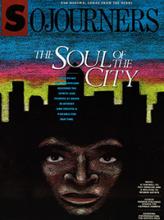Just as those "lazy days" of summer descended on the capital city -- with both temperatures and humidity percentages consistently in the 90s -- the nation's high court undertook what appeared to be an unprecedented flurry of activity. In June in Washington, D.C., you couldn't wave a fan without knocking into a Supreme Court decision.
But sheer numbers weren't what attracted all the attention -- the court, when in session, is always busy. What created a summer storm of heated controversy was the nature of the decisions -- and the apparent trend that observers, depending on their loyalties, either cheered or lamented. The decision upon which most of the nation's attention was riveted was, of course, the Missouri case regarding abortion rights; that landmark case and the controversy that swirls around it will be the subject of the next issue of Sojourners. But several other decisions in the summer of '89 also came down in the eye of a storm.
In the first week of June, the court took up the case of an Alaskan salmon cannery, in which the stratification of work has whites holding virtually all the professional positions, while native Alaskans and Filipinos perform the unskilled labor. Overturning a lower court ruling, which placed on the cannery the burden of proof that its hiring practices do not violate the 1964 Civil Rights Act banning discrimination in employment, the Supreme Court ruled against the minority workers.
A week later the court ruled in favor of white male fire fighters in Birmingham, Alabama, who challenged court-approved affirmative action plans on the basis of reverse discrimination. The court said that white men not involved in the development of affirmative action hiring and promotion programs may sue to challenge their validity -- even years after they have been adopted.
Read the Full Article

